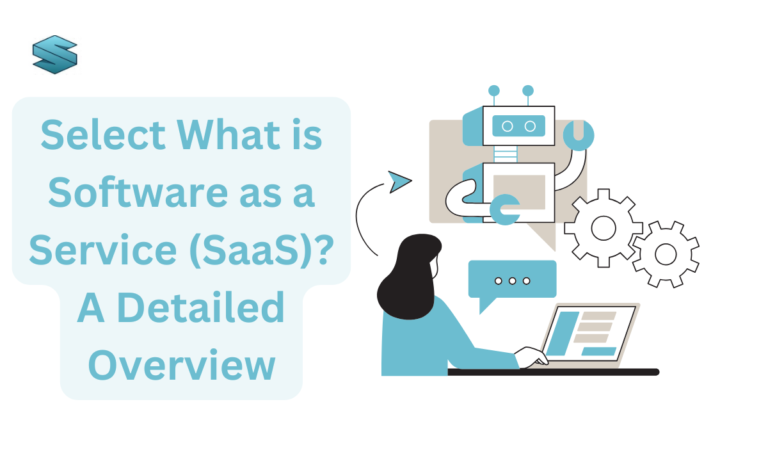
SaaS
Software as a Service (SaaS) is transforming the way businesses and individuals use software by providing on-demand access through the cloud. Unlike traditional software models requiring installations and updates, SaaS applications run on remote servers, ensuring seamless accessibility, automatic updates, and cost-effectiveness. From startups to large enterprises, SaaS is revolutionizing industries by offering scalable and flexible solutions.
The SaaS model is gaining popularity due to its ability to reduce costs, improve collaboration, and enable businesses to focus on their core operations rather than IT infrastructure. It has become an essential part of the digital transformation journey, providing innovative ways to access and use software without the need for extensive hardware investments.
Software as a Service (SaaS) is a game-changer for businesses seeking flexibility, scalability, and cost-effectiveness. It has reshaped industries by offering on-demand software solutions accessible from anywhere. Whether you’re a small business, an enterprise, or an individual, SaaS provides endless possibilities for efficiency and innovation.
What is SaaS?
Software as a Service (SaaS) is a cloud computing model that delivers applications over the internet. Users can access SaaS applications via web browsers without installing them on local devices. SaaS providers manage the software infrastructure, maintenance, and security, allowing users to focus on core business activities.
Key Characteristics of SaaS:
Cloud-based: Hosted on remote servers, accessible via the internet.
Subscription-based: Typically charged monthly or annually.
Automatic Updates: Providers handle maintenance and feature updates.
Scalability: Users can scale their usage up or down based on needs.
Multi-tenancy: A single instance serves multiple users with data isolation.
Cross-platform Compatibility: Works on different devices and operating systems.
Third-party Integrations: Supports API connections with other applications.
Rapid Deployment: Faster implementation compared to on-premises software.
Examples of SaaS Applications
SaaS applications span across various industries, including:
Google Workspace (Gmail, Docs, Sheets) – Productivity tools.
Microsoft 365 – Business and enterprise collaboration.
Salesforce – Customer Relationship Management (CRM).
Dropbox – Cloud storage and file sharing.
Slack – Team communication and collaboration.
Zoom – Video conferencing and virtual meetings.
Trello & Asana – Project management and team collaboration.
Shopify – E-commerce store management.
Netflix & Spotify – Streaming services for entertainment.
Why SaaS is Important?
1. Cost Efficiency
Eliminates upfront hardware and software costs.
Predictable subscription-based pricing.
Reduces the burden of IT infrastructure management.
2. Accessibility & Remote Work
Access from anywhere with an internet connection.
Enables a flexible workforce and remote collaboration.
Ensures continuous business operations even in disruptions.
3. Scalability & Flexibility
Businesses can scale resources as required.
Pay-as-you-go models cater to startups and enterprises alike.
Supports fluctuating business demands and growth.
4. Automatic Updates & Security
Reduces IT maintenance burden.
Data security and compliance are handled by SaaS providers.
Regular patches and updates improve software reliability.
Practical Applications & Industry Use Cases
| Industry | SaaS Application | Use Case |
|---|---|---|
| Healthcare | Epic, Teladoc | Telemedicine & patient management |
| E-commerce | Shopify, BigCommerce | Online store management |
| Marketing | HubSpot, Mailchimp | Email marketing & automation |
| Education | Google Classroom, Coursera | Online learning & training |
| HR & Payroll | Workday, ADP | Employee management & payroll processing |
| Finance | QuickBooks, FreshBooks | Accounting & financial management |
| Legal | Clio, MyCase | Case management & legal document automation |
| Real Estate | Zillow, Propertybase | Property listing & customer management |
Common Challenges & Solutions
1. Data Security Concerns
Solution: Opt for SaaS providers with robust encryption, compliance certifications (GDPR, HIPAA), and multi-factor authentication.
2. Internet Dependency
Solution: Ensure strong connectivity and consider SaaS applications with offline capabilities.
3. Customization Limitations
Solution: Choose SaaS solutions that offer API integrations and configurable workflows.
4. Vendor Lock-in
Solution: Opt for SaaS providers that offer data portability and open integration standards.
5. Downtime Risks
Solution: Select a provider with strong SLAs (Service Level Agreements) guaranteeing uptime and redundancy.
SaaS vs. Other Software Models
| Feature | SaaS | PaaS (Platform as a Service) | IaaS (Infrastructure as a Service) | On-Premises |
|---|---|---|---|---|
| Hosted by Provider | Yes | Yes | No | No |
| User Control | Low | Medium | High | Full |
| Scalability | High | High | Very High | Limited |
| Maintenance Required | Minimal | Moderate | High | High |
| Accessibility | High | High | Medium | Low |
